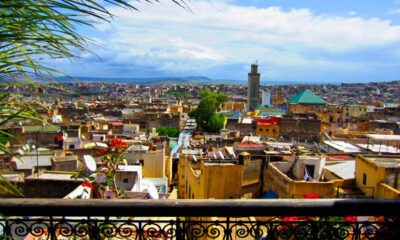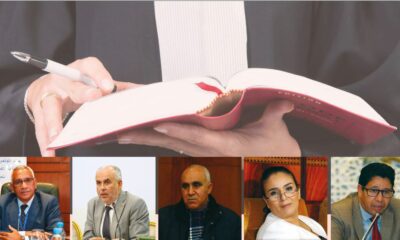Kingdom
Railway Infrastructures: The Era of Modernization
The realization of the high-speed rail line Kénitra-Marrakech will generate colossal engineering works and much more. For the ONCF, the overall project of the future high-speed line is a powerful lever for modernising and expanding the Kingdom’s rail infrastructure.

In the long term, Morocco has set itself the ambitious goal of acquiring a high-speed line (LGV) that will span 1,500 km. This will be deployed on two main axes. The first is the Tanger-Marrakech line, which will serve Agadir, and the second is the Casablanca-Oujda line. To achieve this ambitious regional goal, following the completion of the first high-speed line Tanger-Kénitra over approximately 200 km, the ONCF teams will work tirelessly to extend the Kingdom’s first LGV to Marrakech, covering an additional 430 km.
An impressive component
To realize the necessary infrastructures for the operationalization of the future LGV within the set deadlines, particularly by 2029, the ONCF has launched several international tenders resulting in the awarding of numerous contracts to Moroccan and foreign companies. In this context, the Office has awarded the project management assistance contract for the infrastructure of the LGV Kénitra-Marrakech to the Franco-Moroccan consortium, composed of Egis (lead partner), Systra, and Novec, a subsidiary of the CDG Group. These infrastructures include, among others, the construction of 430 km of new high-speed line (rails, sleepers, ballast), the refurbishment of 250 km of conventional line, the construction of new stations, the construction of new engineering structures (bridges, tunnels, rail bridges, etc.), and signaling equipment. In addition, there are traction and power supply equipment (electric lines, overhead lines, electric substations, etc.), among others. Regarding the refurbishment of the 250 km of conventional line, Khalid Khairane, a representative within the ONCF, explained at the 3rd edition of the Rail Industry Summit in Casablanca that “this component concerns areas currently in operation (Casablanca, Rabat), where the tracks will be doubled or even quadrupled.” Evidently, this railway track refurbishment project will boost the operational performance of the national office in the coming years, as it focuses on modernizing its rolling stock and railway infrastructures as its main battlefront.
The engineering structures to be built
The LGV Kénitra-Marrakech, which will impact 4 regions (accounting for 76% of the national GDP) and 58% of the national population, will involve significant construction works of art and reshape the urban landscape along the Kénitra-Rabat Agdal axis. It is worth noting that out of the 53 billion dirhams allocated to the LGV extension project, around 24 billion dirhams are dedicated to civil engineering, representing just under half of the project’s total budget. This signifies the enormity of the work involved. Specifically, the LGV route will pass through the urban area of Salé and the Bouregreg Valley via viaducts. Additionally, a 3 km tunnel will traverse the administrative capital to Rabat-Agdal station. The Rabat-Casablanca route will head towards the main station of the economic capital and Mohammed V Airport. To connect Casablanca to Marrakech, the LGV will cover a land area of over 3,500 hectares and allow travelers to cover the Tanger-Marrakech distance in a record time of 2 hours and 40 minutes (compared to the current 7 hours). Another advantage of the future LGV is its connection between two airports (Rabat and Casablanca) and three stadiums (Rabat, Hassan II in Casablanca, and Marrakech). This reconfiguration of railway connectivity demonstrates that the LGV will be a key element for the mobility of football enthusiasts heading to stadiums to support their national team during the 2030 World Cup. Additionally, apart from laying 170,000 tons of rails and installing 700 km of overhead lines, other important infrastructures to be built under the extensive LGV Kénitra-Marrakech project include four LGV electrical substations, over 300 bridges and rail bridges, 27 km of cable-stayed bridges and viaducts, 15 km of galleries, three maintenance centers, around ten storage sites, and new stations.
Four New High-Speed Stations
In addition to the construction and refurbishment of 33 RER stations along the conventional line, the LGV Kénitra-Marrakech project incorporates the construction of four new high-speed stations that will emerge in the Kingdom. Greater Casablanca will host three of these stations: Casa Sud, the New Terminal, and the future Grand Stade Hassan II in Benslimane, which will be built for the 2030 World Cup. The increasingly popular city of Marrakech, attracting tourists from five continents, will also have a high-speed station. According to the ONCF’s schedule, as reported by “La Vie éco,” the construction of the four new high-speed stations will be completed by 2028, while the work on the 33 RER stations will conclude by 2027. It is important to highlight that the next-generation high-speed stations in Tanger, Kénitra, Casa Voyageurs, and Rabat-Agdal, which are already operational, have mobilized nearly 2 billion dirhams in investments. Ultimately, through the construction of new RER stations, including 11 in Greater Casablanca (Sidi Bernoussi, Zenata, Nouvelle Médina, Hay Mohammadi, etc.), the ONCF aims to modernize its sites while enhancing their accessibility and interoperability with public transport.













